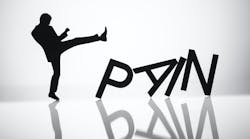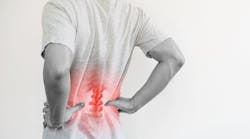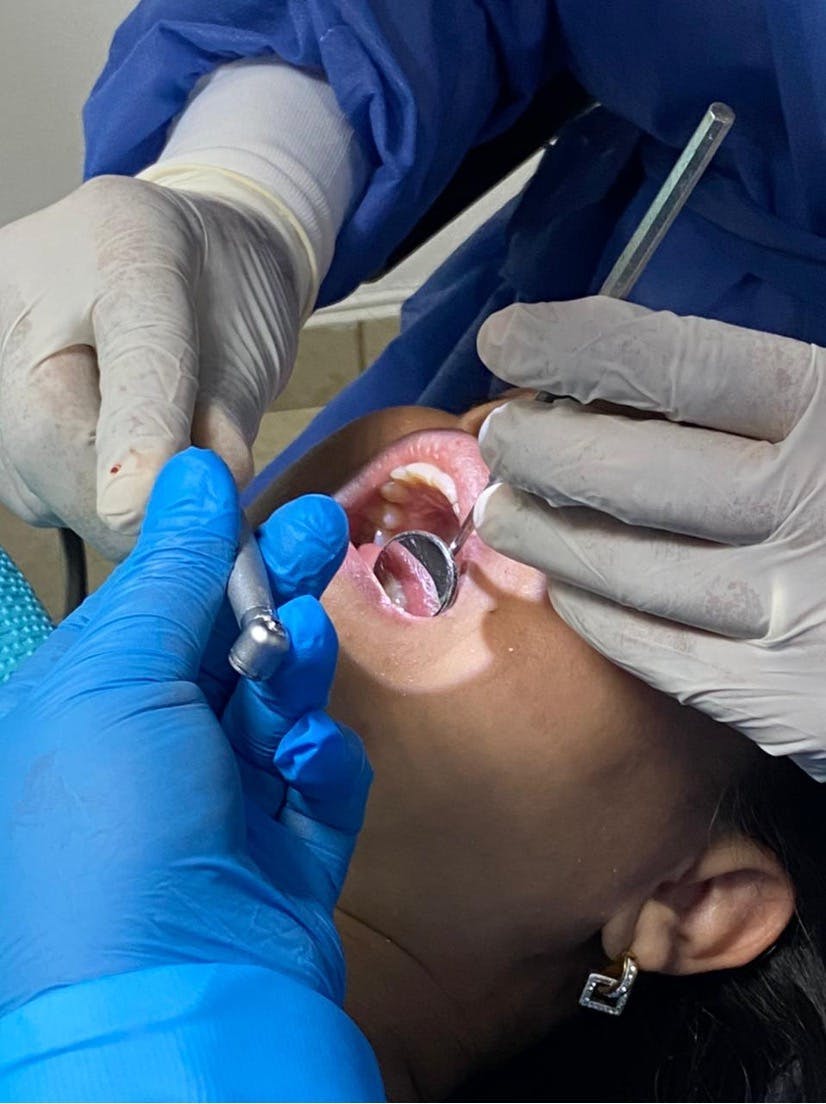Ergonomics for dentists: Optimizing time, motion, and efficiency in your practice
Wasting time, wasting motions, and being inefficient in the dental office represent a source of constant physical fatigue, cognitive distraction, and decreased productivity with a financial impact in the medium term.1
Ergonomics and human relations are established disciplines in other industries, but are fairly unexplored in dentistry. Using knowledge from these two disciplines to make the operator healthier, productive, and efficient depends on all equipment being optimized for operator comfort. 2
Efficiency means performing or functioning in the best possible manner with the least waste of time and effort, having and using requisite knowledge, skill, and capabilities.
One of the most significant aspects to control in the office is the high number of items, supplies, and equipment the dentist needs to perform a simple procedure. It does not matter which task; dentists and assistants deal with equipment, patient anxiety, time constraints, decision-making, precision, and multitasking almost constantly.3
Managing all this requires preparation, organization, training, and knowledge. Thankfully, dentistry is a profession of repetition, and with repetition, mastery comes with time, so let's keep it simple. Make it simple and build good habits, then good behaviors.
There are three factors to focus on for increased efficiency and improved performance in the office:
- Horizontal reaching control (zones, mobility)
- Four-handed dentistry (preorganization, positioning)
- Ergonomics laws of motion (microscope, motion control, fatigue, operator, and assistant)
Horizontal reaching
With its high risk for musculoskeletal disorders, dentistry necessitates a collective effort in managing workstations. The frequency and duration of awkward postures make preorganization crucial to prevent unnecessary motions. Dentists and assistants must work together to manage workstations, particularly horizontal reaching areas.4
A systematic approach is critical to managing horizontal areas of workstations. This approach involves dividing the areas into specific zones, each with instrument, supply, and equipment placement guidelines (figure 1).
Constant reaching area: Ranges 14 inches from the elbow. Instruments, supplies, and equipment; reaching > 5 times per minute
Frequent reaching area: Ranges 19 inches from the shoulder. Instruments, supplies, and equipment; reaching 1–5 times per minute
Occasional reaching area: Ranges 25 inches from the shoulder. Instruments, supplies, and equipment; reaching < 1 time per minute
Office staff deal with common prolonged seated static postures and are well served to observe a similar working range. By identifying items used constantly, frequently, and occasionally, the dentist and assistant can preorganize every detail to face each task efficiently, knowing that more time working and motions in the constant area are the ones nearest the neutral posture range, promoting motion control and minimizing joint fatigue. 5
Four-handed dentistry
Dental assistant support and four-handed dentistry are the pillars of dental ergonomics. With a well-trained assistant, dentists can be efficient, proficient, and precise at the highest level.6 There are crucial factors in training an assistant and creating a reliable workflow in the operatory:
Positioning: The assistant should position their left side parallel to the patient's left arm and their seat higher than the operator's sight line to achieve the best angle for horizontal reaching, optimal transferral dynamics, anticipation, and view angle without compromising their neutral posture (figure 2).7
Preorganization and organization: Anticipation cuts time, increases productivity, and minimizes wasted motions. Every dental procedure in the office should be managed with a schedule and agenda, and there should be a knowledge of the task in advance. Dentistry is a profession of repetition; supplies needed for a particular procedure are usually the same, and if prepared before the patient arrives and organized according to horizontal reaching guidelines, working time is maximized and there is minimal cognitive and physical fatigue due to repetitive awkward movement.8
A properly positioned and organized assistant will result in efficiency and better health for the dentist and assistant (figure 3).
Ergonomics laws of motion
Gary Carr, the father of microscope dentistry, established this working philosophy to preserve motion and maximize efficiency.9
This simple working guidelines approach connects the aforementioned factors—horizontal reaching and four-handed dentistry—enlightening dental professionals on how these concepts are interrelated.
Proper intentional motions save time and energy, promoting workflow and less stress on the body and mind.
Class I: Motions moving only the fingers
Class II: Motions moving fingers and wrist
Class III: Motions originating from the elbow
Class IV: Motions originating from the shoulder
Class V: Motions that involving twisting or bending at the waist
Classes I and II are the healthiest for the dentist. In these classes, a well-trained assistant should handle the areas surrounding the constantly reaching area, which typically is around the patient's mouth. The dentist's hands are ready to receive the instrument transferred by the assistant (figure 4).
The dentist should avoid picking supplies outside of the constant reaching area, avoid twisting and bending from the lumbar and cervical area, and reduce the frequency and duration of these motions. Reducing these motions is one of the most critical prevention actions the dentist can take to minimize musculoskeletal risk factors.
Conclusion
Dentistry is a team discipline, which means that many factors are involved in realizing any task. Time constraints, positioning, posture, and motion are factors to consider to build a stress-free, painless, high-performance practice for the dentist and the assistant.
It takes discipline and repetition for dentists and assistants to become aware of the impact of controlled motions and the efficiency this promotes, and to build natural behaviors, both dentists and assistants need to develop a practice centered on neutral posture protection while performing at the highest level of precision with workflow.
Editor's note: This article originally appeared in DE Weekend, the newsletter that will elevate your Sunday mornings with practical and innovative practice management and clinical content from experts across the field. Subscribe here.
References
- Kulkarni S, Dagli N, Duraiswamy P, Desai H, Vyas H, Baroudi K. Stress and professional burnout among newly graduated dentists. J Int Soc Prev Community Dent. 2016;6(6):535-541. doi:10.4103/2231-0762.195509
- Gupta A, Ankola AV, Hebbal M. Optimizing human factors in dentistry. Dent Res J (Isfahan). 2013;10(2):254-259. doi:10.4103/1735-3327.113362
- Plessas A, Nasser M, Hanoch Y, O'Brien T, Bernardes Delgado M, Moles D. Impact of time pressure on dentists' diagnostic performance. J Dent. 2019;82:38-44. doi:10.1016/j.jdent.2019.01.011
- Openshaw et al. Ergonomics and Design A Reference Guide. Allsteel Inc Publisher, 2006.
- Wan JJ, Qin Z, Wang PY, Sun Y, Liu X. Muscle fatigue: general understanding and treatment. Exp Mol Med. 2017;49(10):e384. Published 2017 Oct 6. doi:10.1038/emm.2017.194
- Lyubovnikova J, West NA, Dawson JF, et al. 24-Karat or fool’s gold? Consequences of real team and co-acting group membership in healthcare organizations. Eur J Work Organ Psychol. 2015;24:929–950. DOI: 10.1080/1359432X.2014.992421
- Ergonomics and posture guidelines for oral health professionals. FDI World Dental Federation. 2021. https://www.fdiworlddental.org/sites/default/files/2021-04/FDI_HSDW_ergonomics_and_posture_guidelines_eng_2021.pdf
- Mamoun J. Basic principles of maximizing dental office productivity. Gen Dent. 2012;60(2):130-136.
- Gary Carr. The Use of the Operating Microscope in Endodontics. April 2010. Dental Clinics of North America 54(2):191-214.













